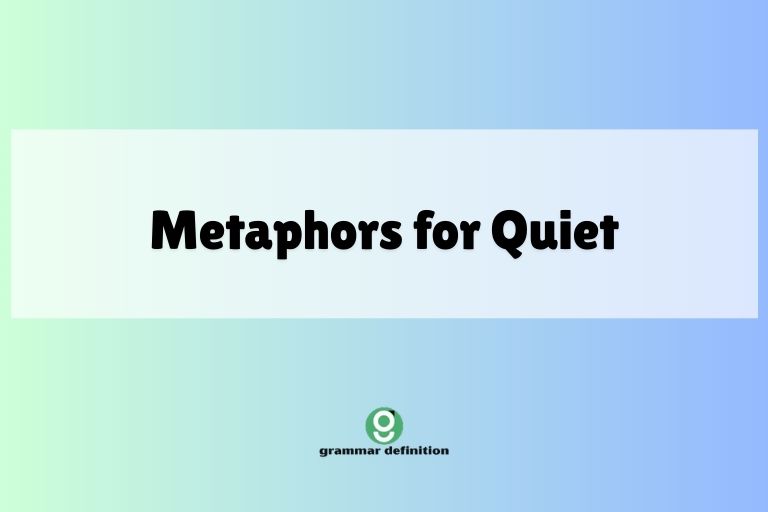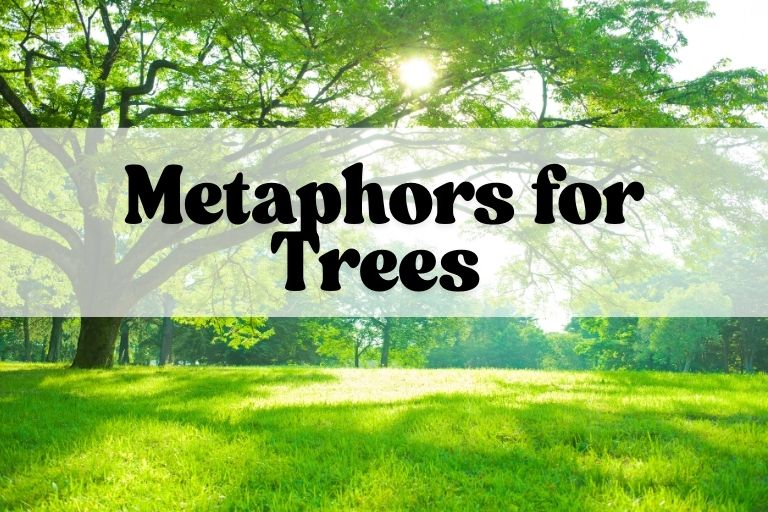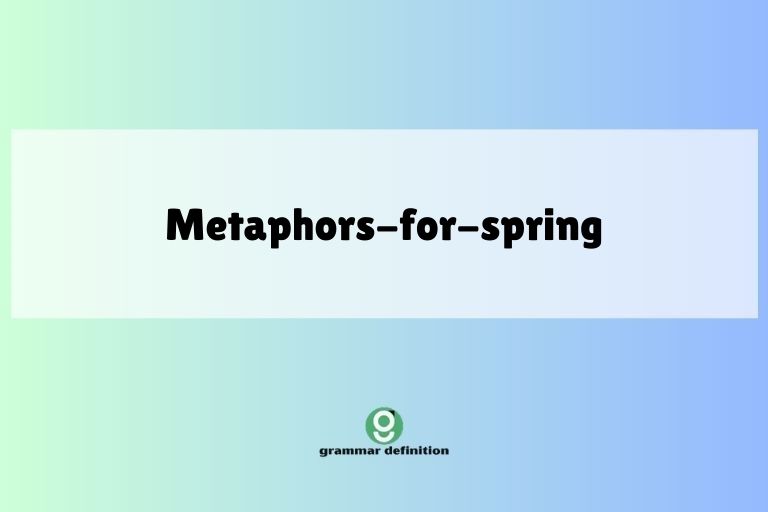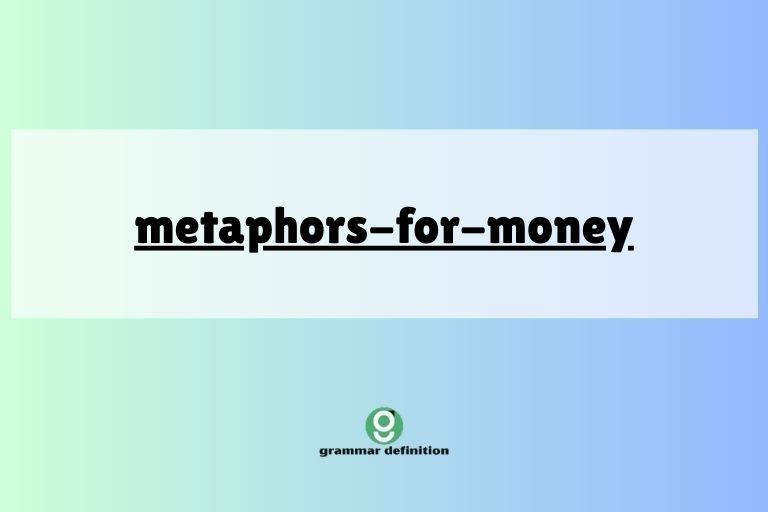Sky Metaphors: A Comprehensive Guide for English Learners
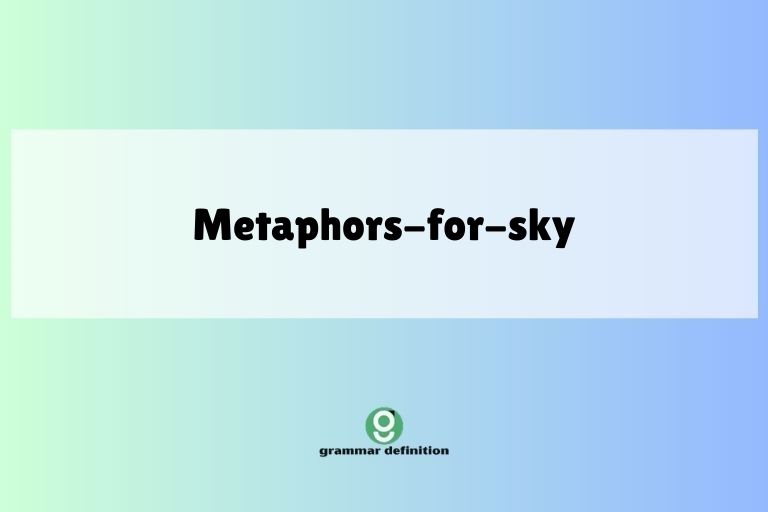
Metaphors are powerful tools in the English language, allowing us to express complex ideas and emotions in vivid and imaginative ways. When it comes to describing the sky, metaphors offer a rich tapestry of imagery that goes beyond simple descriptions of color and weather.
Understanding these sky metaphors not only enhances your comprehension of literature and poetry but also expands your expressive capabilities. This guide is designed for English learners of all levels, from beginners to advanced speakers, who wish to deepen their understanding and appreciation of metaphorical language.
By exploring the various types of sky metaphors, analyzing their structures, and practicing their usage, you will gain a more nuanced understanding of how language can be used creatively. This knowledge will empower you to both interpret and create compelling descriptions of the sky, enriching your writing and conversation.
Table of Contents
- Introduction
- Definition of Sky Metaphors
- Structural Breakdown of Sky Metaphors
- Types and Categories of Sky Metaphors
- Examples of Sky Metaphors
- Usage Rules for Sky Metaphors
- Common Mistakes with Sky Metaphors
- Practice Exercises
- Advanced Topics in Sky Metaphors
- Frequently Asked Questions
- Conclusion
Definition of Sky Metaphors
A metaphor is a figure of speech that directly compares two unlike things without using “like” or “as.” It asserts that one thing *is* another, creating a connection based on shared characteristics or qualities. Sky metaphors, therefore, use this technique to describe the sky in terms of something else, imbuing it with new meaning and imagery.
These metaphors can relate to the sky’s color, texture, weather, emotional impact, or even its perceived shape and form.
The function of a sky metaphor is to enhance our understanding and appreciation of the sky by drawing parallels to familiar concepts. This allows us to see the sky in a new light, evoking emotions and creating vivid mental images that a literal description might fail to achieve.
Sky metaphors can be found in literature, poetry, song lyrics, and everyday conversation, adding depth and richness to our language.
The context in which a sky metaphor is used is crucial for understanding its intended meaning. The surrounding words, the overall tone of the text, and the cultural background of the speaker or writer all contribute to the interpretation of the metaphor.
For instance, describing the sky as a “stormy sea” evokes a sense of turbulence and danger, while describing it as a “gentle blanket” suggests comfort and peace.
Structural Breakdown of Sky Metaphors
Sky metaphors typically consist of two main elements: the **tenor** and the **vehicle**. The tenor is the subject being described (in this case, the sky), and the vehicle is the object or concept to which the sky is being compared.
The connection between the tenor and the vehicle is the shared characteristic or quality that forms the basis of the metaphor.
For example, in the metaphor “the sky is a canvas,” the tenor is “the sky,” and the vehicle is “a canvas.” The shared characteristic is the idea of a surface that can be filled with color and imagery. The metaphor suggests that the sky, like a canvas, is a vast and dynamic space where colors and patterns are displayed.
Understanding the structure of sky metaphors helps us to analyze their meaning and appreciate their effectiveness. By identifying the tenor, the vehicle, and the shared characteristic, we can gain a deeper understanding of the intended message and the emotional impact of the metaphor.
Let’s break down another example: “The sky wept tears of rain.” Here, the tenor is “sky” and the vehicle is “wept tears of rain.” The shared characteristic is the act of releasing liquid, suggesting a sense of sadness or cleansing. The structure, though simple, conveys a powerful image.
Types and Categories of Sky Metaphors
Sky metaphors can be categorized based on the specific aspect of the sky they emphasize. Here are some common categories:
Color Metaphors
These metaphors focus on the colors of the sky, comparing them to other objects or substances that share similar hues. They often evoke specific emotions and associations based on the colors being described.
For example, “the sky was a sea of sapphire” emphasizes the deep blue color and creates a sense of vastness and tranquility.
Texture Metaphors
Texture metaphors describe the visual or perceived texture of the sky, such as its smoothness, roughness, or cloudiness. These metaphors can create a sense of depth, dimension, and atmosphere.
For example, “the sky was a tapestry of clouds” suggests a rich and intricate pattern of varying shapes and densities.
Weather Metaphors
Weather metaphors use weather phenomena to describe the sky, emphasizing its dynamism and changeability. These metaphors often convey a sense of power, unpredictability, and emotional intensity.
For example, “the sky was a raging inferno” suggests a violent and destructive storm.
Emotional Metaphors
Emotional metaphors attribute human emotions to the sky, creating a sense of empathy and connection. These metaphors can evoke feelings of joy, sadness, anger, or peace.
For example, “the sky sighed with relief” suggests a sense of release and tranquility after a period of tension.
Object Metaphors
Object metaphors compare the sky to specific objects, highlighting its shape, size, or function. These metaphors can create a sense of scale, perspective, and purpose.
For example, “the sky was a vast dome” emphasizes the expansive and encompassing nature of the sky.
Examples of Sky Metaphors
Here are some detailed examples of sky metaphors, categorized by type, to illustrate their usage and meaning.
Color Metaphor Examples
The following table provides examples of color metaphors used to describe the sky, along with their implied meanings.
| Metaphor | Implied Meaning |
|---|---|
| The sky was a canvas of cerulean blue. | A clear, bright, and serene sky. |
| The dawn painted the sky rose-gold. | A beautiful and warm sunrise. |
| The twilight sky bled hues of amethyst and lavender. | A peaceful and subtly colored sunset. |
| The stormy sky was a bruise of indigo. | A dark, ominous, and threatening sky. |
| The sky was a sheet of molten silver. | A bright, reflective, and metallic sky. |
| The sunset turned the sky into a fiery orange river. | A vibrant and intense sunset. |
| The morning sky was a pale lemon. | A soft, gentle, and refreshing sky. |
| The sky was a deep well of midnight blue. | A dark, mysterious, and profound sky. |
| The clouds scattered like puffs of cotton across the azure sky. | A light, airy, and gentle sky. |
| The horizon glowed with a vermilion fire. | A passionate and intense sunset. |
| The sky wore a cloak of sable. | A dark, mysterious, and potentially dangerous night sky. |
| The afternoon sky was a clear turquoise. | A vibrant, refreshing, and clear sky. |
| The sun dipped below the horizon, painting the sky with strokes of coral. | A warm, vibrant, and tropical sunset. |
| The sky was a vast expanse of sapphire. | A deep, rich, and precious blue sky. |
| The clouds were edged with platinum. | Bright, reflective, and valuable-looking clouds. |
| The sky was a watercolor wash of periwinkle. | A soft, gentle, and dreamy sky. |
| The approaching storm darkened the sky to charcoal. | A gloomy, ominous, and threatening sky. |
| The sky shimmered with a pearlescent glow. | A radiant, iridescent, and ethereal sky. |
| The sky was a vast ocean of cerulean. | A serene and expansive blue sky. |
| Golden sunlight bathed the sky in amber hues. | A warm, glowing, and precious sky. |
| The sunset painted the sky with strokes of scarlet and crimson. | A vibrant and intense sunset. |
| The sky was a calming expanse of powder blue. | A gentle, soothing, and peaceful sky. |
| The storm clouds gathered, turning the sky a menacing slate grey. | A dark, ominous, and threatening sky. |
| The moon cast a silvery glow across the inky sky. | A mysterious and ethereal night sky. |
| The sky was a pure, unblemished alabaster. | A clean, clear, and pristine sky. |
| The sunrise filled the sky with a blush of peach. | A soft, warm, and delicate sunrise. |
| The sky was a swirling vortex of cobalt. | A deep, intense, and dynamic blue sky. |
| The clouds drifted lazily across the ivory sky. | A calm, peaceful, and elegant sky. |
Texture Metaphor Examples
The following table presents examples of texture metaphors used to describe the sky, along with their corresponding meanings.
| Metaphor | Implied Meaning |
|---|---|
| The sky was a velvety curtain. | A smooth, dark, and enveloping sky. |
| The clouds were fluffy cotton balls scattered across the blue. | Light, airy, and soft clouds. |
| The sky was a wrinkled sheet of parchment. | A textured, uneven, and aged sky. |
| The storm clouds were a heavy, woolly blanket. | Dense, oppressive, and threatening clouds. |
| The sky was a seamless silk. | A smooth, elegant, and unbroken sky. |
| The sky was a vast, open book of stories untold. | An expansive and mysterious sky. |
| The sky was a rippled sea of clouds. | A dynamic, uneven, and wavy sky. |
| The clouds were like brushstrokes of white paint on blue. | Artistic, textured, and layered clouds. |
| The sky was a gritty canvas of pollution. | A dirty, unpleasant, and unhealthy sky. |
| The clouds were like tangled skeins of yarn. | Complex, intertwined, and dense clouds. |
| The sky was a smooth, polished mirror. | Reflective, clear, and unbroken sky. |
| The clouds were like crumpled paper. | Uneven, textured, and chaotic clouds. |
| The sky was a rough, unfinished tapestry. | Incomplete, textured, and dynamic sky. |
| The clouds were like sculpted marble. | Solid, defined, and artistic clouds. |
| The sky was a soft, downy quilt. | Comforting, gentle, and enveloping sky. |
| The clouds were like plumes of smoke. | Light, airy, and transient clouds. |
| The sky was a fragile web of stars. | Delicate, intricate, and interconnected sky. |
| The clouds were like shards of glass. | Sharp, fragmented, and potentially dangerous clouds. |
| The sky was a vast, billowing sail. | An expansive and graceful sky. |
| The clouds were like scattered feathers. | Light, airy, and delicate clouds. |
| The sky was a textured mosaic of light and shadow. | A complex and artistic sky. |
| The clouds were like heaps of whipped cream. | Light, fluffy, and sweet-looking clouds. |
| The sky was a smooth, unbroken expanse of glass. | A clear, pristine, and reflective sky. |
| The clouds were like swirling eddies in a cosmic stream. | Dynamic, fluid, and ethereal clouds. |
| The sky was a rough-hewn stone facade. | A solid, unyielding, and ancient sky. |
| The clouds were like tattered flags in a celestial breeze. | Weathered, worn, and graceful clouds. |
| The sky was a vast, undulating ocean of air. | An expansive and dynamic sky. |
| The clouds were like spun sugar. | Light, delicate, and sweet-looking clouds. |
Weather Metaphor Examples
This table illustrates weather metaphors used to describe the sky, along with their associated meanings.
| Metaphor | Implied Meaning |
|---|---|
| The sky roared with thunder. | A violent and powerful storm. |
| The sky wept tears of rain. | A sad and melancholic atmosphere. |
| The sky unleashed a torrent of hail. | A sudden and intense hailstorm. |
| The sky was a furnace of heat. | An extremely hot and oppressive atmosphere. |
| The sky whispered a gentle breeze. | A calm and peaceful atmosphere. |
| The sky raged like a wounded beast. | A violent and destructive storm. |
| The sky sighed with a cool evening draft. | A refreshing and gentle breeze. |
| The sky spat snowflakes. | A light and scattered snowfall. |
| The sky was a blinding blizzard of white. | An intense and overwhelming snowstorm. |
| The sky chuckled with a playful gust of wind. | A light and cheerful breeze. |
| The sky thrashed with lightning. | A violent and erratic thunderstorm. |
| The sky showered blessings of rain. | A gentle and nourishing rainfall. |
| The sky was a crucible of heat and humidity. | An oppressive and uncomfortable atmosphere. |
| The sky howled with gale-force winds. | A fierce and powerful windstorm. |
| The sky dripped fog like a leaky faucet. | A persistent and heavy fog. |
| The sky exploded with a fireworks display of lightning. | A spectacular and dramatic thunderstorm. |
| The sky was a sauna, sweltering and humid. | An extremely hot and humid atmosphere. |
| The sky coughed up a dust storm. | A sudden and disruptive dust storm. |
| The sky was a vast, frozen tundra. | An extremely cold and barren atmosphere. |
| The sky poured rain like a never-ending waterfall. | A heavy and persistent rainfall. |
| The sky was a simmering cauldron of atmospheric pressure. | An unstable and potentially volatile atmosphere. |
| The sky gurgled with the rumble of distant thunder. | An approaching storm with ominous sounds. |
| The sky was a vast desert, dry and unforgiving. | An arid and harsh atmosphere. |
| The sky swirled with the chaos of a hurricane. | A violent and destructive storm. |
| The sky was a canvas of dancing snowflakes. | A gentle and beautiful snowfall. |
| The sky belched a cloud of volcanic ash. | A sudden and disruptive volcanic eruption. |
Emotional Metaphor Examples
This table showcases emotional metaphors used to describe the sky, along with their corresponding meanings.
| Metaphor | Implied Meaning |
|---|---|
| The sky smiled with sunshine. | A happy and cheerful atmosphere. |
| The sky frowned with dark clouds. | A sad and gloomy atmosphere. |
| The sky raged with anger. | A violent and turbulent atmosphere. |
| The sky sighed with relief. | A peaceful and calming atmosphere. |
| The sky wept with sorrow. | A melancholic and mournful atmosphere. |
| The sky sulked behind a veil of rain. | A gloomy and withdrawn atmosphere. |
| The sky danced with joy. | A lively and cheerful atmosphere. |
| The sky trembled with fear. | An unsettling and apprehensive atmosphere. |
| The sky glowed with contentment. | A peaceful and satisfied atmosphere. |
| The sky brooded with impending doom. | An ominous and threatening atmosphere. |
| The sky whispered secrets of the night. | A mysterious and intriguing atmosphere. |
| The sky dreamed in shades of twilight. | A tranquil and imaginative atmosphere. |
| The sky yearned for the sun’s return. | A longing and expectant atmosphere. |
| The sky grieved with the passing of the day. | A somber and reflective atmosphere. |
| The sky celebrated with a burst of dawn. | A joyful and invigorating atmosphere. |
| The sky despaired under the weight of the storm. | An overwhelming and hopeless atmosphere. |
| The sky hoped for a break in the clouds. | An optimistic and expectant atmosphere. |
| The sky lamented with the sound of the wind. | A sorrowful and mournful atmosphere. |
| The sky exulted in the vibrant hues of sunset. | A triumphant and joyful atmosphere. |
| The sky mourned with the silence of the night. | A somber and reflective atmosphere. |
| The sky blushed with the first light of day. | A gentle and innocent atmosphere. |
| The sky scoffed at the feeble attempts of the sun to break through. | A mocking and dismissive atmosphere. |
| The sky reveled in the beauty of the starry expanse. | A delighted and appreciative atmosphere. |
| The sky resigned itself to the darkness of the night. | An accepting and passive atmosphere. |
| The sky sulked behind a heavy shroud of clouds. | A gloomy and resentful atmosphere. |
| The sky thrilled with the electricity of an approaching storm. | An excited and anticipatory atmosphere. |
Object Metaphor Examples
The following table provides examples of object metaphors used to describe the sky, accompanied by their corresponding meanings.
| Metaphor | Implied Meaning |
|---|---|
| The sky was a vast dome. | An expansive and encompassing space. |
| The sky was a blue ocean. | A vast and fluid expanse. |
| The sky was a cosmic stage. | A grand and dramatic setting. |
| The sky was a giant screen. | A surface for displaying images and events. |
| The sky was an endless book. | A source of knowledge and stories. |
| The sky was a celestial map. | A guide to navigation and discovery. |
| The sky was a boundless arena. | A space for action and competition. |
| The sky was a floating world. | A separate and distinct realm. |
| The sky was an infinite mirror. | A reflection of ourselves and the universe. |
| The sky was a grand cathedral. | An awe-inspiring and sacred space. |
| The sky was a limitless canvas. | A space for artistic expression and creativity. |
| The sky was a cosmic clock. | A measure of time and change. |
| The sky was a giant telescope. | A window into the distant universe. |
| The sky was an ethereal curtain. | A barrier between worlds. |
| The sky was a boundless garden. | A place of beauty and growth. |
| The sky was a cosmic playground. | A space for fun and exploration. |
| The sky was a vast library. | A repository of knowledge and information. |
| The sky was an endless highway. | A path for travel and adventure. |
| The sky was a celestial palace. | A place of grandeur and magnificence. |
| The sky was a limitless ocean of possibilities. | A space for opportunity and potential. |
Usage Rules for Sky Metaphors
When using sky metaphors, it’s important to ensure clarity, relevance, and originality. Here are some guidelines to follow:
- Clarity: The metaphor should be easily understood by the reader or listener. Avoid using obscure or overly complex comparisons.
- Relevance: The comparison should be meaningful and appropriate to the context. The shared characteristic between the sky and the vehicle should be evident.
- Originality: Strive to create fresh and imaginative metaphors that offer a new perspective on the sky. Avoid clichés and overused expressions.
- Consistency: Maintain consistency in your metaphorical language throughout your writing or conversation. Avoid mixing metaphors that clash or contradict each other.
- Purpose: Consider the purpose of your metaphor. What emotion or idea are you trying to convey? Choose a metaphor that effectively communicates your intended message.
Exceptions: While originality is encouraged, some established sky metaphors have become widely accepted and understood. These can be used effectively, but be mindful of their potential for being perceived as clichés. For example, “the sky is the limit” is a common metaphor that suggests boundless possibilities.
Common Mistakes with Sky Metaphors
Here are some common mistakes to avoid when using sky metaphors:
- Mixed Metaphors: Combining two or more incompatible metaphors, creating a confusing or nonsensical image.
- Incorrect: The sky was a raging fire breathing down our necks. (Mixing “raging fire” and “breathing down our necks”)
- Correct: The sky was a raging fire.
- Correct: The oppressive heat felt like the sky was breathing down our necks.
- Clichés: Using overused and predictable metaphors that lack originality and impact.
- Incorrect: The sky was as blue as the sea.
- Correct: The sky was a canvas of cerulean, stretching towards the horizon.
- Inappropriate Comparisons: Choosing metaphors that are not relevant or meaningful to the context.
- Incorrect: The sky was a delicious pizza. (Unless the context involves a surreal or humorous scene)
- Correct: The sky was a vast, starlit expanse, a cosmic pizza of infinite toppings. (If the context allows for humor)
- Overly Complex Metaphors: Creating metaphors that are too complicated or difficult to understand.
- Incorrect: The sky was a quantum entanglement of celestial frequencies, oscillating between dimensions of perceived reality.
- Correct: The sky shimmered with an otherworldly glow.
Practice Exercises
Test your understanding of sky metaphors with these practice exercises.
Exercise 1: Identifying Metaphors
Identify the metaphors in the following sentences and explain their meaning.
| Question | Answer |
|---|---|
| 1. The sky was a bruised plum after the storm. | Metaphor: “bruised plum.” Meaning: The sky was a dark, purplish color, suggesting damage or injury. |
| 2. The clouds were ships sailing across the azure sea. | Metaphor: “ships.” Meaning: The clouds resembled ships moving gracefully across the blue sky. |
| 3. The sky was a symphony of colors at sunset. | Metaphor: “symphony.” Meaning: The sky displayed a harmonious and beautiful combination of colors. |
| 4. The sky was a heavy lid pressing down on the city. | Metaphor: “heavy lid.” Meaning: The sky felt oppressive and suffocating, weighing down the city. |
| 5. The sky was an artist’s palette, splashed with vibrant hues. | Metaphor: “artist’s palette.” Meaning: The sky displayed a wide range of colors, like those on an artist’s palette. |
| 6. The stars were diamonds scattered across a velvet cloth. | Metaphor: “diamonds.” Meaning: The stars shone brightly and beautifully against the dark sky. |
| 7. The moon was a ghostly galleon, sailing through the night. | Metaphor: “ghostly galleon.” Meaning: The moon appeared like a spectral ship moving silently through the darkness. |
| 8. The sky was a silent witness to the events below. | Metaphor: “silent witness.” Meaning: The sky passively observed the events taking place on Earth. |
| 9. The clouds were cotton candy, melting in the sun. | Metaphor: “cotton candy.” Meaning: The clouds were light, fluffy, and dissipating in the heat. |
| 10. The sky was a stage, and the sun was the leading actor. | Metaphor: “stage,” “leading actor.” Meaning: The sky served as a backdrop for the sun’s dramatic appearance. |
Exercise 2: Creating Metaphors
Create your own sky metaphors for the following situations.
| Situation | Possible Metaphor |
|---|---|
| 1. A clear, sunny day | The sky was a crystal bell, ringing with sunlight. |
| 2. A dark, stormy night | The sky was a battlefield, where thunder and lightning clashed. |
| 3. A colorful sunrise | The sunrise was a painter’s masterpiece, unfolding across the sky. |
| 4. A sky full of stars | The sky was a treasure chest, overflowing with sparkling jewels. |
| 5. A sky with fluffy clouds | The clouds were sheep grazing in the pasture of the sky. |
| 6. A hazy, smoggy sky | The sky was a dirty window, obscuring the sun’s light. |
| 7. A sky after a rainstorm | The sky was a clean slate, washed fresh by the rain. |
| 8. A sky with a rainbow | The sky was a bridge, arching between the earth and the heavens. |
| 9. A sky with a full moon | The moon was a pearl, illuminating the darkness of the night. |
| 10. A sky with cirrus clouds | The clouds were brushstrokes, painted delicately across the sky. |
Advanced Topics in Sky Metaphors
For advanced learners, consider exploring the following topics:
- Extended Metaphors: Developing a single metaphor throughout an entire poem or passage, creating a complex and layered meaning.
- Symbolism: Understanding the symbolic meanings associated with different sky metaphors, such as the sun representing hope or the storm representing chaos.
- Cultural Context: Analyzing how cultural beliefs and traditions influence the use and interpretation of sky metaphors in different societies.
- Historical Evolution: Tracing the historical development of sky metaphors in literature and art, examining how their meanings have changed over time.
Frequently Asked Questions
Here are some frequently asked questions about sky metaphors:
- What is the difference between a metaphor and a simile?
A metaphor directly equates two unlike things (e.g., “The sky is a canvas”), while a simile compares them using “like” or “as” (e.g., “The sky is like a canvas”).
- How can I improve my ability to create effective sky metaphors?
Practice observing the sky and identifying its various characteristics. Read poetry and literature that use sky metaphors, and experiment with creating your own comparisons.
- Are there any specific colors that are commonly used in sky metaphors?
Blue, gold, silver, and grey are common colors used in sky metaphors, often evoking feelings of peace, beauty, or sadness.
- Can sky metaphors be used in everyday conversation?
Yes, sky metaphors can add richness and expressiveness to your everyday language. However, be mindful of the context and audience.
- How do I avoid using clichés when creating sky metaphors?
Strive to be original and imaginative in your comparisons. Think beyond the obvious and consider unique or unexpected associations.
- What role does personification play in sky metaphors?
Personification, attributing human qualities to inanimate objects, is common. For instance, “The sky wept tears of rain” uses personification to convey sadness.
- How can the cultural background influence the interpretation of sky metaphors?
Different cultures may associate different meanings with colors, weather patterns, and celestial objects, which can influence the interpretation of sky metaphors.
- What are some examples of extended sky metaphors in famous literature?
Many poems and novels use extended sky metaphors to create a sustained mood or theme. For example, in some Romantic poetry, the sky is used as an extended metaphor for spiritual longing.
Conclusion
Sky metaphors are a powerful way to express your creativity and deepen your understanding of the English language. By mastering the art of using metaphors to describe the sky, you can add depth, richness, and emotional
resonance to your writing and speech.
Keep practicing, observing, and exploring the vast possibilities that sky metaphors offer. Happy writing!


